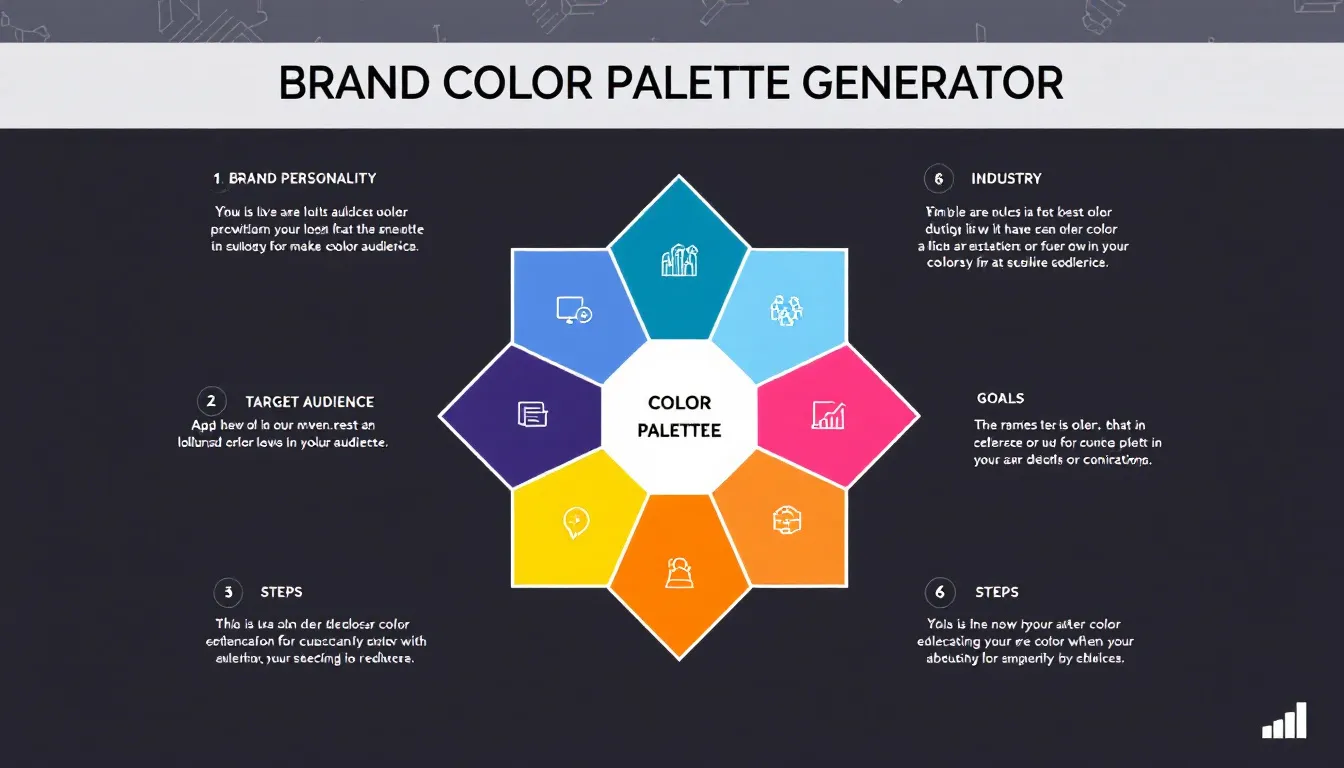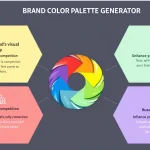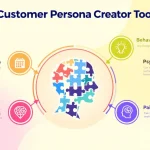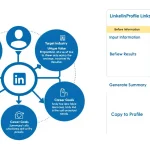Is this tool helpful?
How to Use the Brand Identity Color Palette Generator
Our Brand Identity Color Palette Generator helps you create a professional and cohesive color scheme that aligns with your brand’s values and resonates with your target audience. Here’s a step-by-step guide on using this powerful tool effectively:
1. Brand Personality Input
In the first field, describe your brand’s personality, values, and key characteristics. Be specific and detailed. For example:
- “Sustainable luxury fashion brand emphasizing ethical production, timeless elegance, and environmental consciousness”
- “Dynamic fintech startup focused on innovation, security, and user empowerment in digital banking”
2. Target Audience Description
Define your target audience demographics, preferences, and behaviors. Examples include:
- “Environmentally conscious millennials (30-45) with high disposable income, interested in sustainable luxury and ethical consumption”
- “Tech-savvy Gen Z entrepreneurs (18-25) seeking modern financial solutions and digital-first experiences”
3. Industry Specification
Enter your business sector clearly and specifically, such as:
- “Sustainable Luxury Fashion”
- “Financial Technology Services”
4. Optional Fields for Enhanced Results
For more refined results, complete the optional fields:
- Brand Goals: Outline specific objectives like “Establish ourselves as the leading sustainable luxury brand in the Nordic region”
- Competitor Colors: List existing color schemes in your market to ensure differentiation
Understanding Brand Color Psychology Generator
This tool combines color psychology principles, industry standards, and consumer behavior research to generate optimal color palettes that communicate your brand’s essence effectively.
Key Features
- AI-powered color harmony analysis
- Industry-specific color recommendations
- Psychological color impact assessment
- Cultural color significance consideration
- Accessibility and contrast optimization
Benefits of Using the Brand Color Palette Generator
1. Strategic Brand Alignment
The tool ensures your color palette aligns with your brand strategy by:
- Analyzing brand personality traits
- Matching colors to brand values
- Creating emotional connections with target audiences
2. Market Differentiation
Stand out from competitors while maintaining industry relevance through:
- Unique color combinations
- Industry-appropriate selections
- Memorable visual identities
3. Professional Quality Results
Achieve professional-grade color schemes that:
- Follow color theory principles
- Maintain visual harmony
- Ensure practical applications
Practical Applications and Use Cases
Example 1: E-commerce Fashion Brand
Input:
- Brand Personality: “Modern, sustainable, minimalist fashion focusing on timeless pieces”
- Target Audience: “Fashion-conscious professionals aged 25-40 prioritizing quality and sustainability”
- Industry: “Sustainable Fashion”
Generated Palette:
- Primary: Sage Green (#7D8471) – Representing sustainability and sophistication
- Secondary: Warm Taupe (#483C32) – Adding earthiness and timelessness
- Accent: Soft White (#F5F5F5) – Ensuring minimalist appeal
Example 2: Financial Services App
Input:
- Brand Personality: “Innovative, secure, and user-friendly digital banking solution”
- Target Audience: “Tech-savvy millennials seeking modern financial management tools”
- Industry: “Financial Technology”
Generated Palette:
- Primary: Deep Navy (#1B365D) – Conveying trust and security
- Secondary: Electric Blue (#007FFF) – Representing innovation
- Accent: Mint Green (#98FF98) – Adding freshness and financial growth
Implementation Strategies
1. Digital Applications
- Website design and development
- Social media assets
- Digital marketing materials
- Mobile applications
2. Physical Applications
- Print marketing materials
- Packaging design
- Retail environments
- Corporate stationery
Frequently Asked Questions
Q: How many colors should a brand palette include?
A: A typical brand color palette consists of 3-5 colors: 1-2 primary colors, 1-2 secondary colors, and 1-2 accent colors. This provides enough variety while maintaining cohesion.
Q: Can I modify the generated color palette?
A: Yes, consider the generated palette as a strategic starting point. You can adjust the specific hues, tints, and shades while maintaining the overall color harmony.
Q: How often should I update my brand’s color palette?
A: Brand color palettes typically last 5-10 years. Consider updating when your brand evolves significantly or when market conditions change substantially.
Q: How do I ensure color consistency across different platforms?
A: Document your color codes in various formats (HEX, RGB, CMYK, Pantone) and create a comprehensive brand style guide for consistent application.
Q: Should my color palette match current design trends?
A: While awareness of trends is important, focus on colors that reflect your brand’s core values and resonate with your target audience for long-term success.
Q: Can I use the same color palette for both digital and print materials?
A: Yes, but ensure you have proper color conversions for different mediums. Work with professional printers to maintain consistency in physical applications.
Advanced Color Application Tips
1. Color Ratio Guidelines
Follow the 60-30-10 rule:
- 60% primary color
- 30% secondary color
- 10% accent color
2. Accessibility Considerations
- Ensure sufficient contrast for text readability
- Test color combinations for color-blind users
- Maintain WCAG 2.1 compliance for digital applications
3. Cultural Sensitivity
- Research color meanings in target markets
- Consider cultural associations and taboos
- Adapt palette usage for different regions
Important Disclaimer
The calculations, results, and content provided by our tools are not guaranteed to be accurate, complete, or reliable. Users are responsible for verifying and interpreting the results. Our content and tools may contain errors, biases, or inconsistencies. We reserve the right to save inputs and outputs from our tools for the purposes of error debugging, bias identification, and performance improvement. External companies providing AI models used in our tools may also save and process data in accordance with their own policies. By using our tools, you consent to this data collection and processing. We reserve the right to limit the usage of our tools based on current usability factors. By using our tools, you acknowledge that you have read, understood, and agreed to this disclaimer. You accept the inherent risks and limitations associated with the use of our tools and services.







